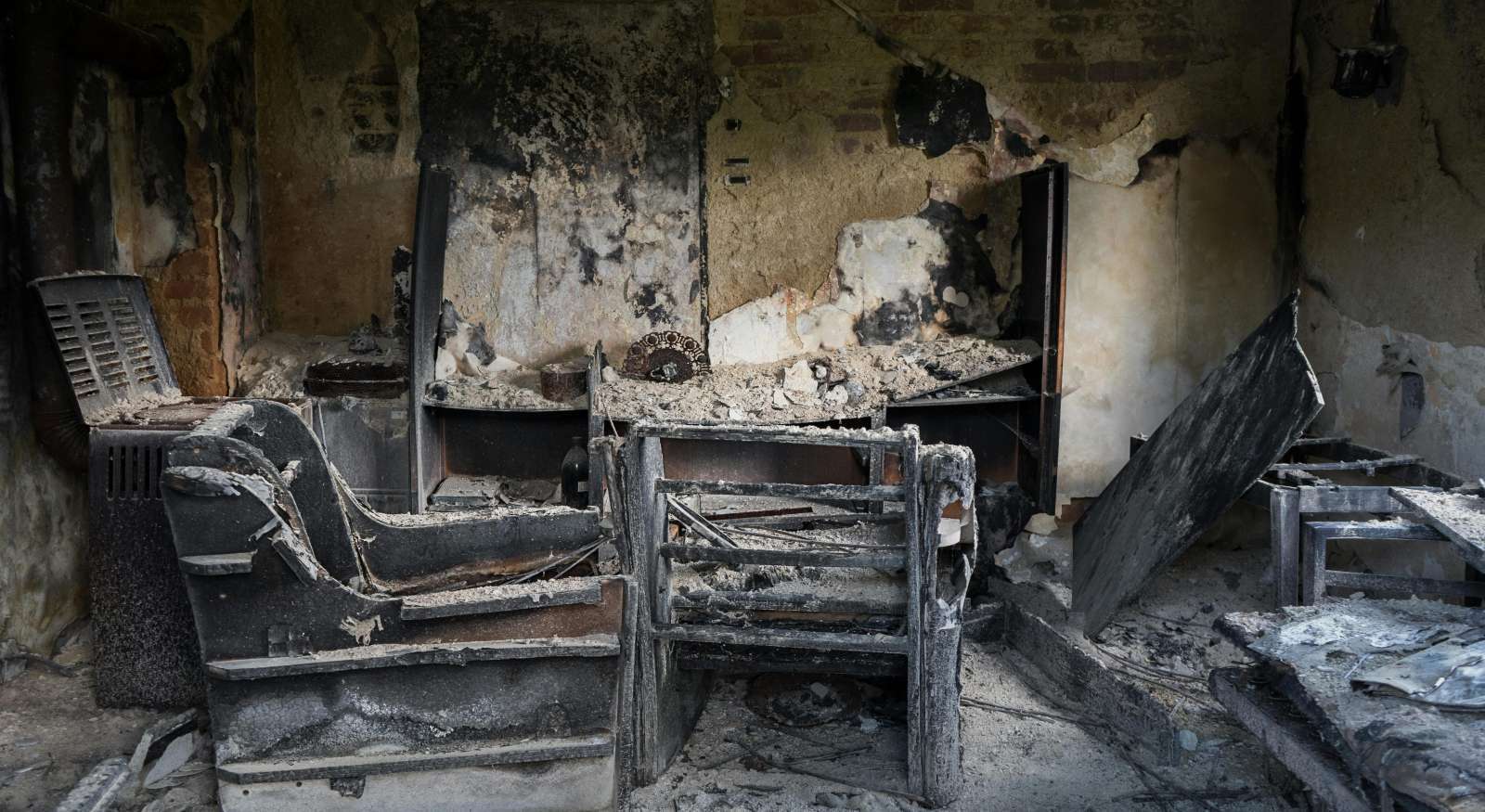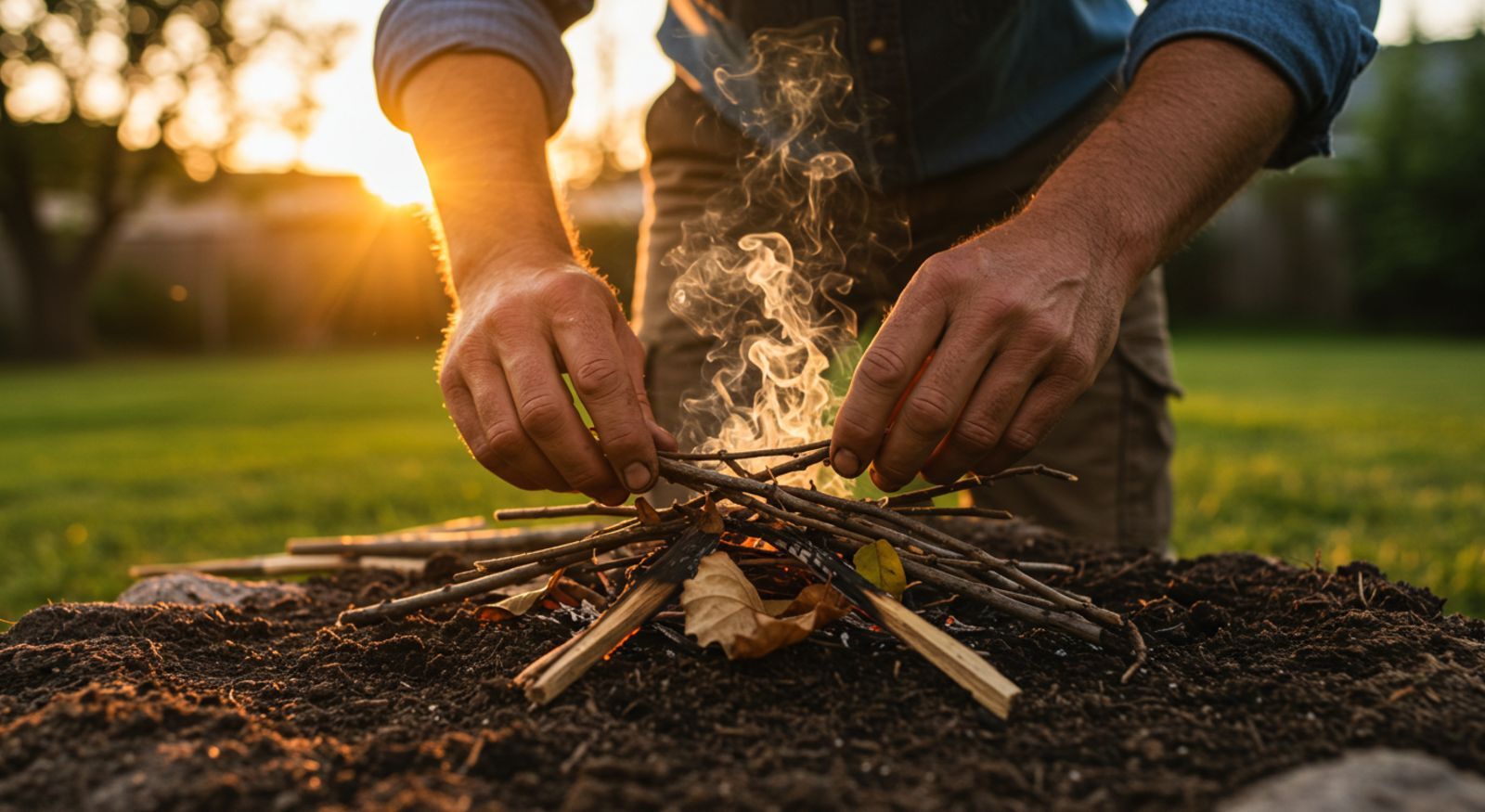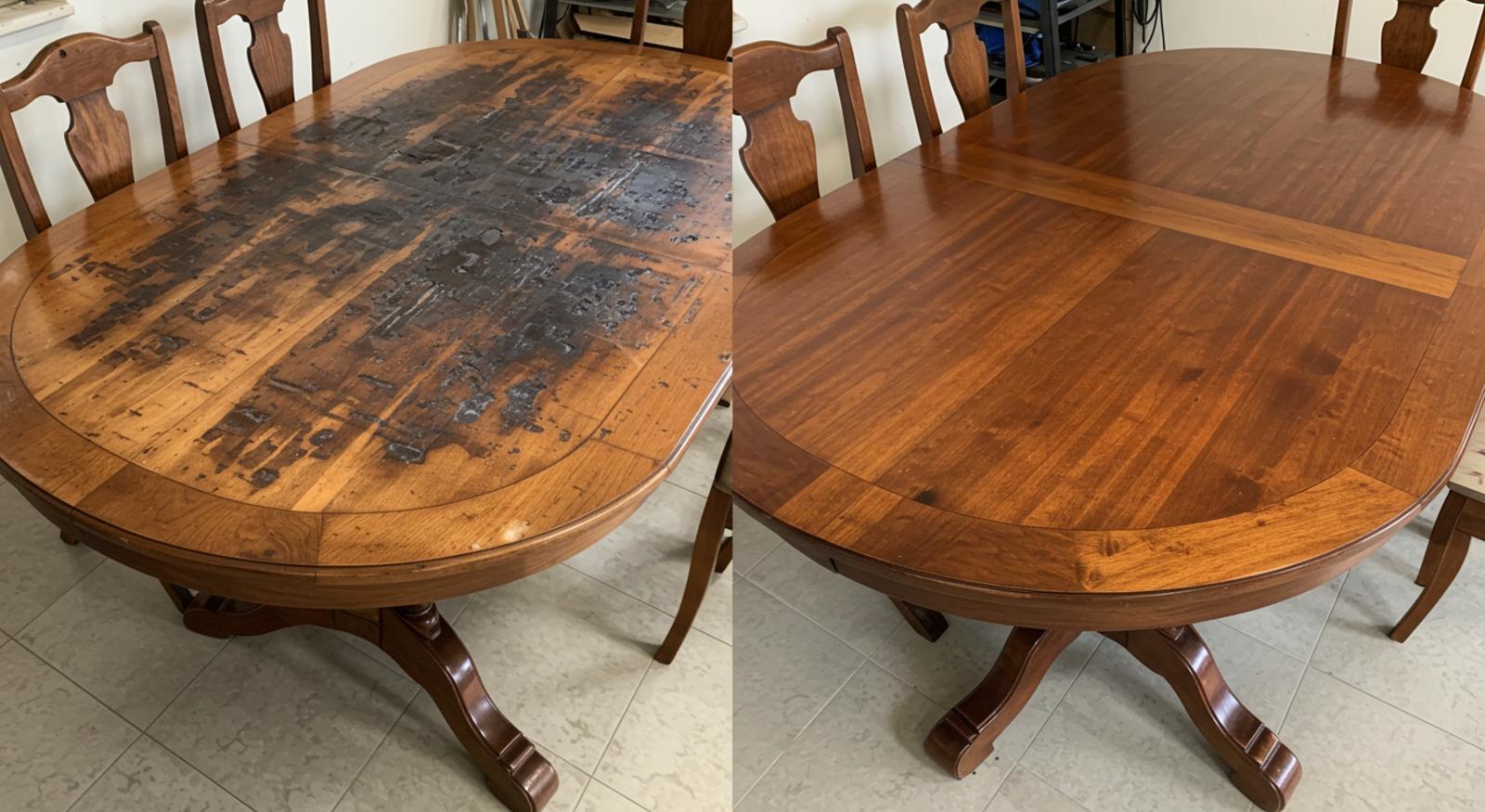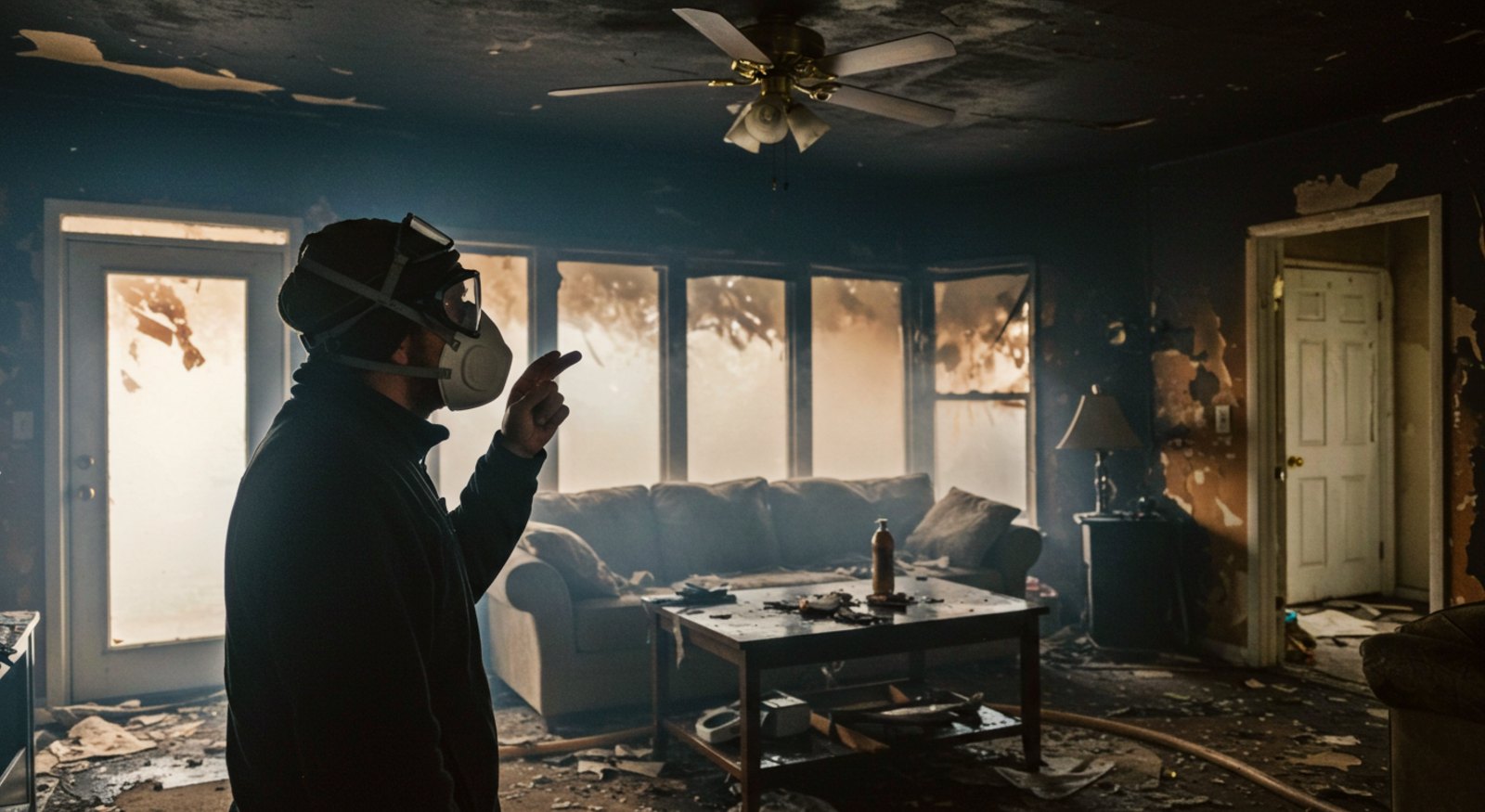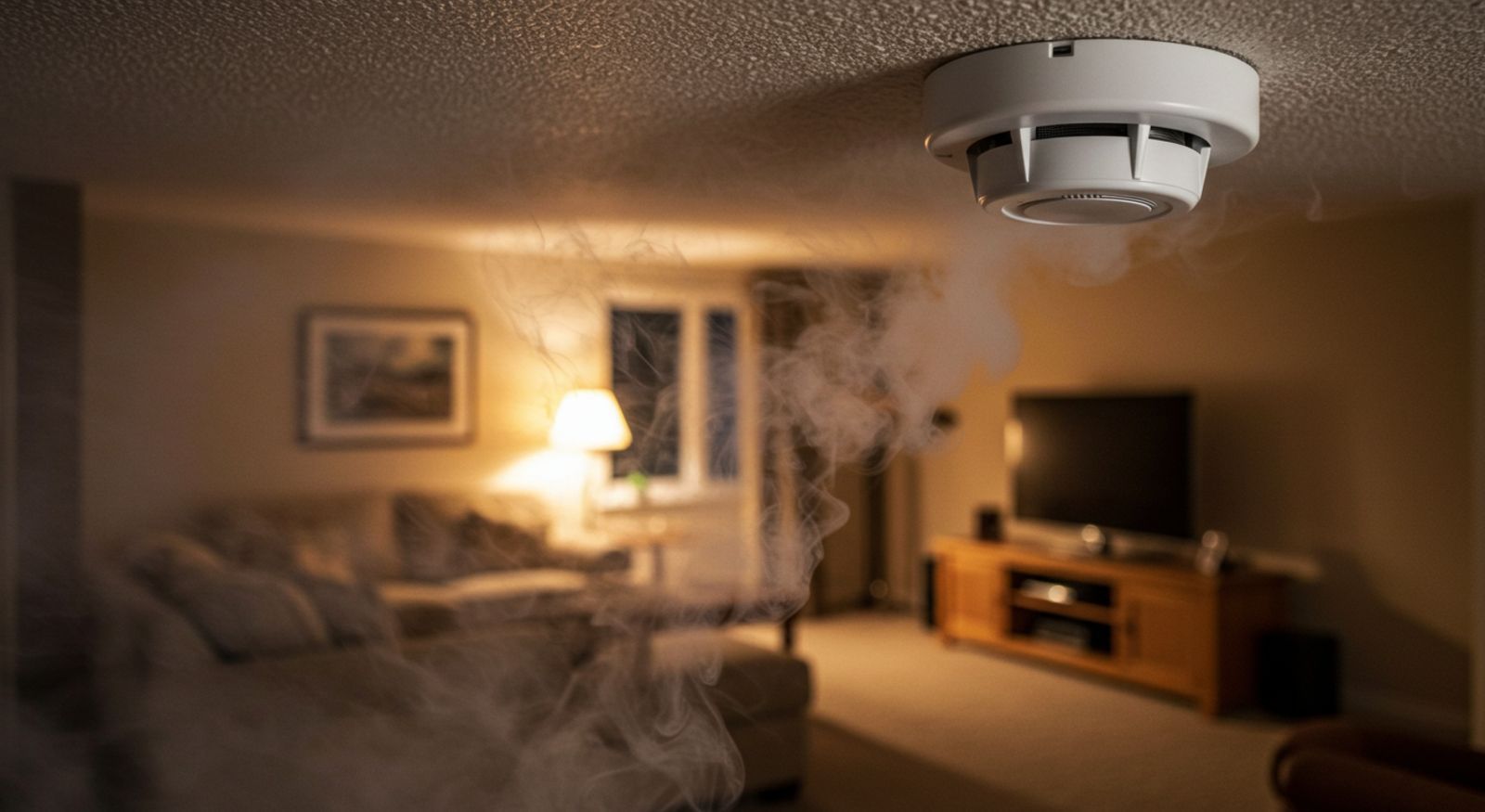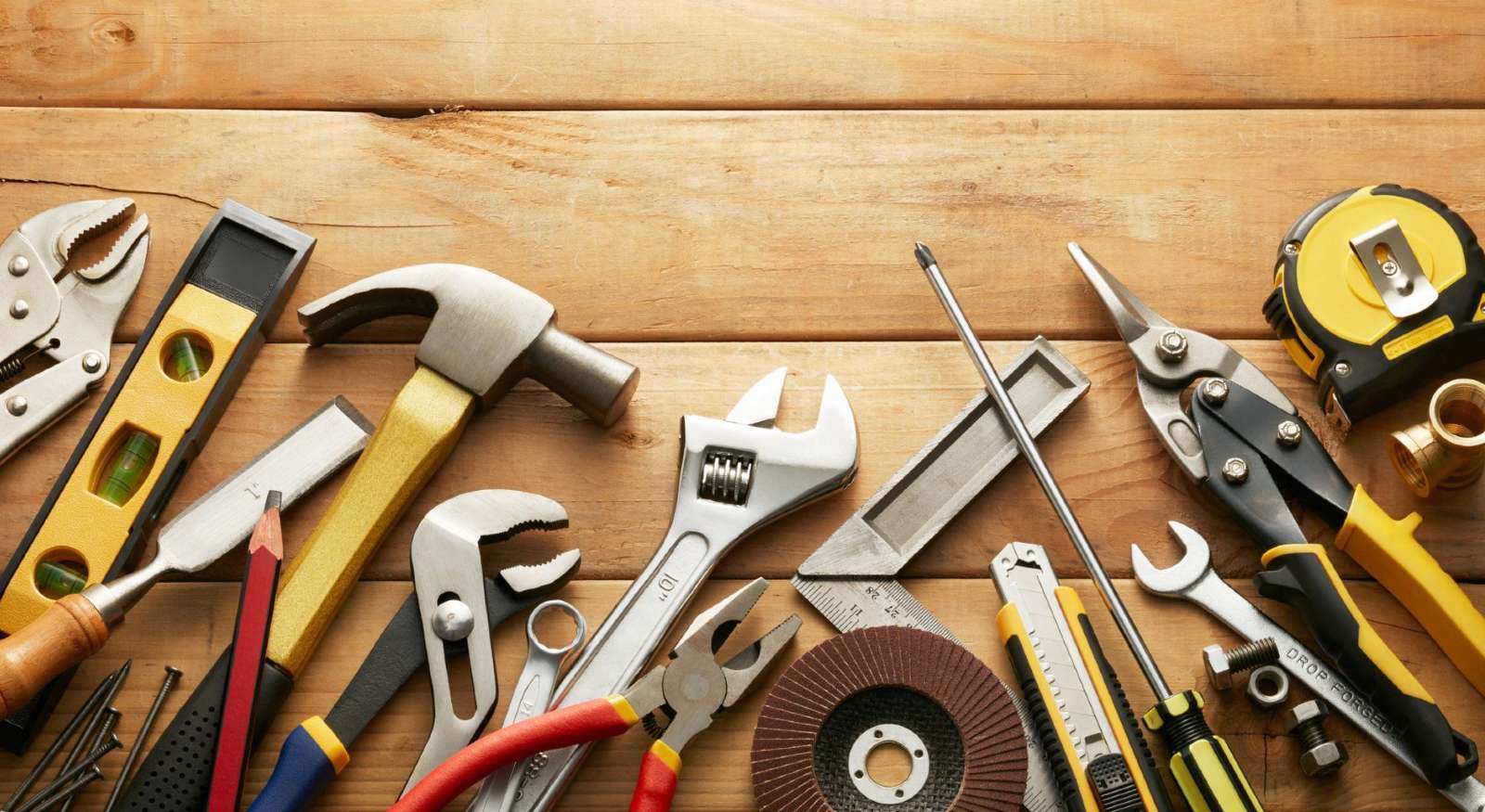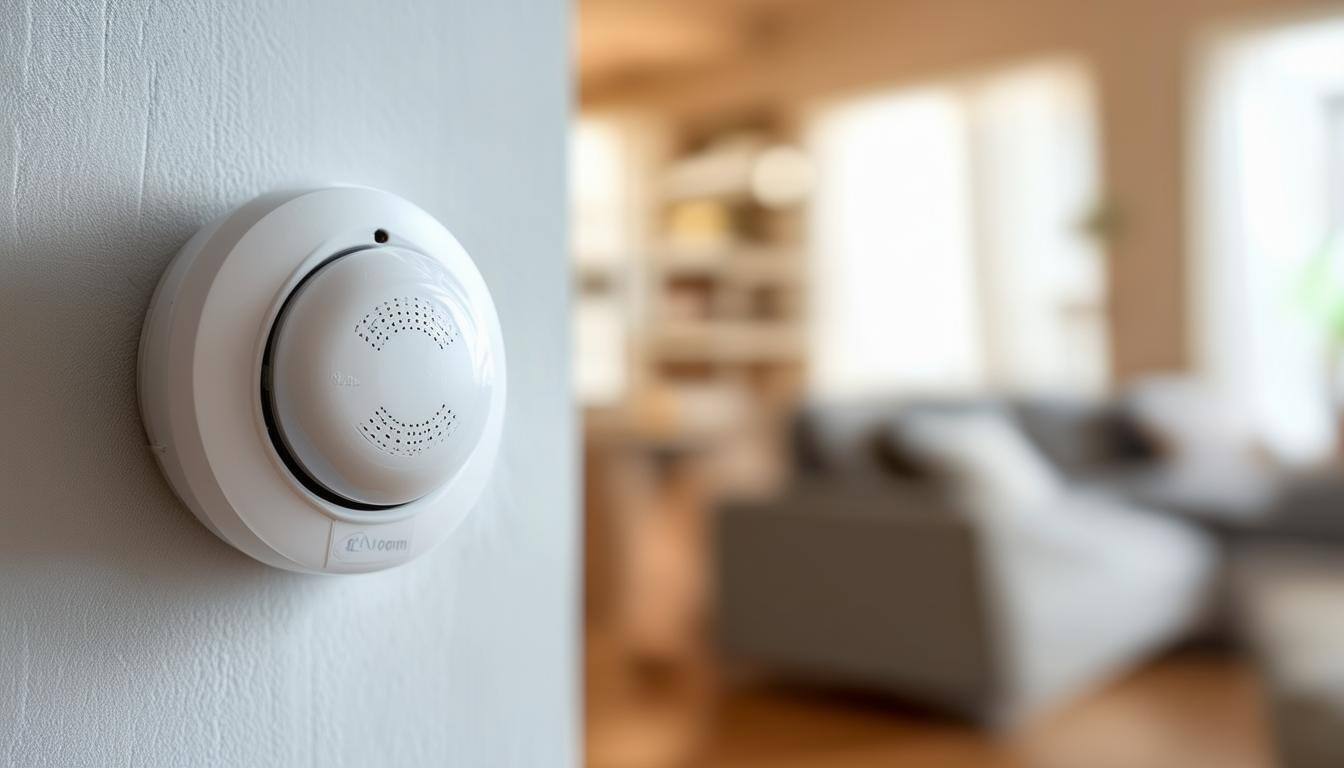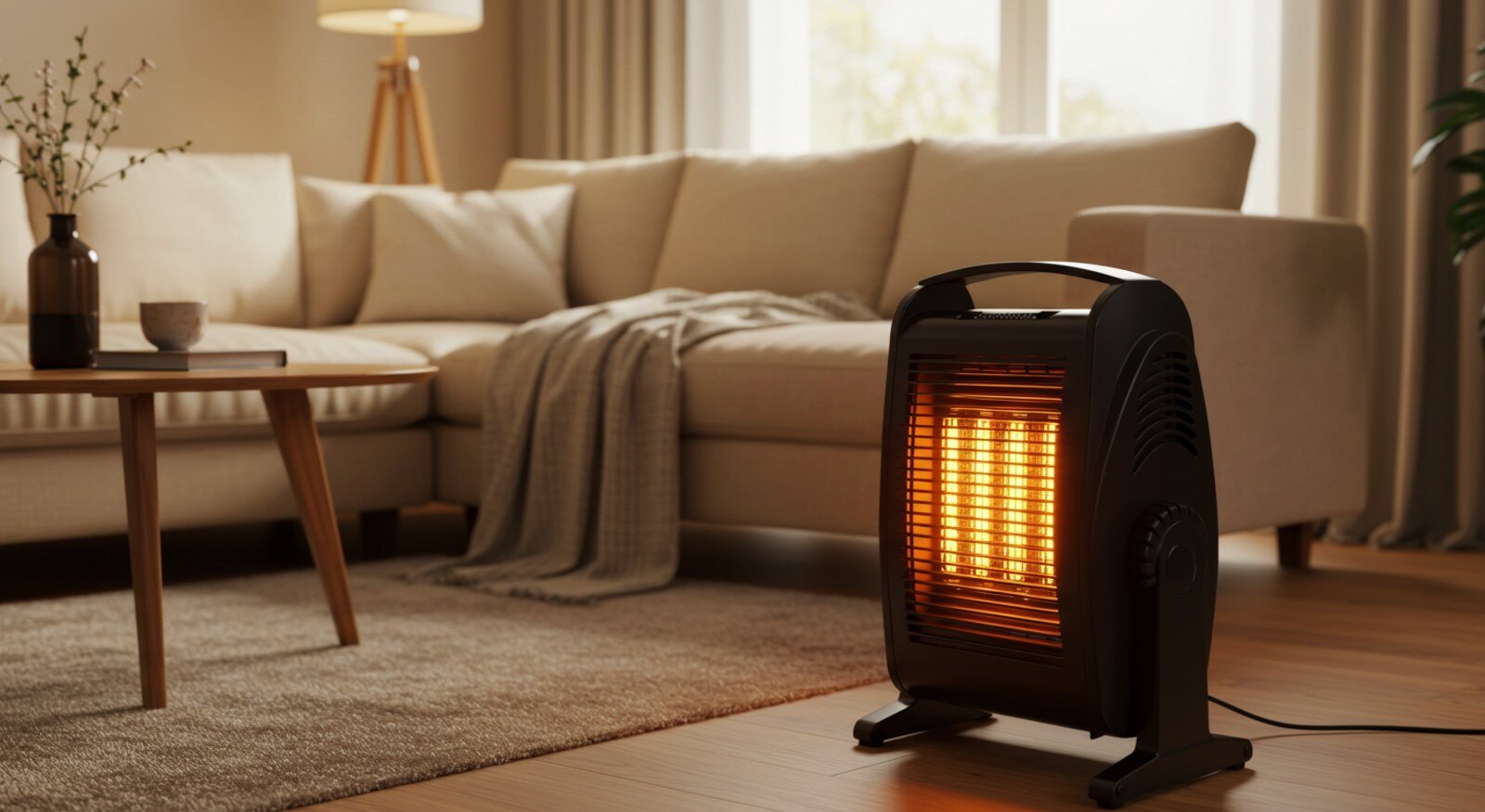Fire Prevention: Understanding the Different Fire Categories (and How to Fight Them)
August 11th, 2025
4 min read
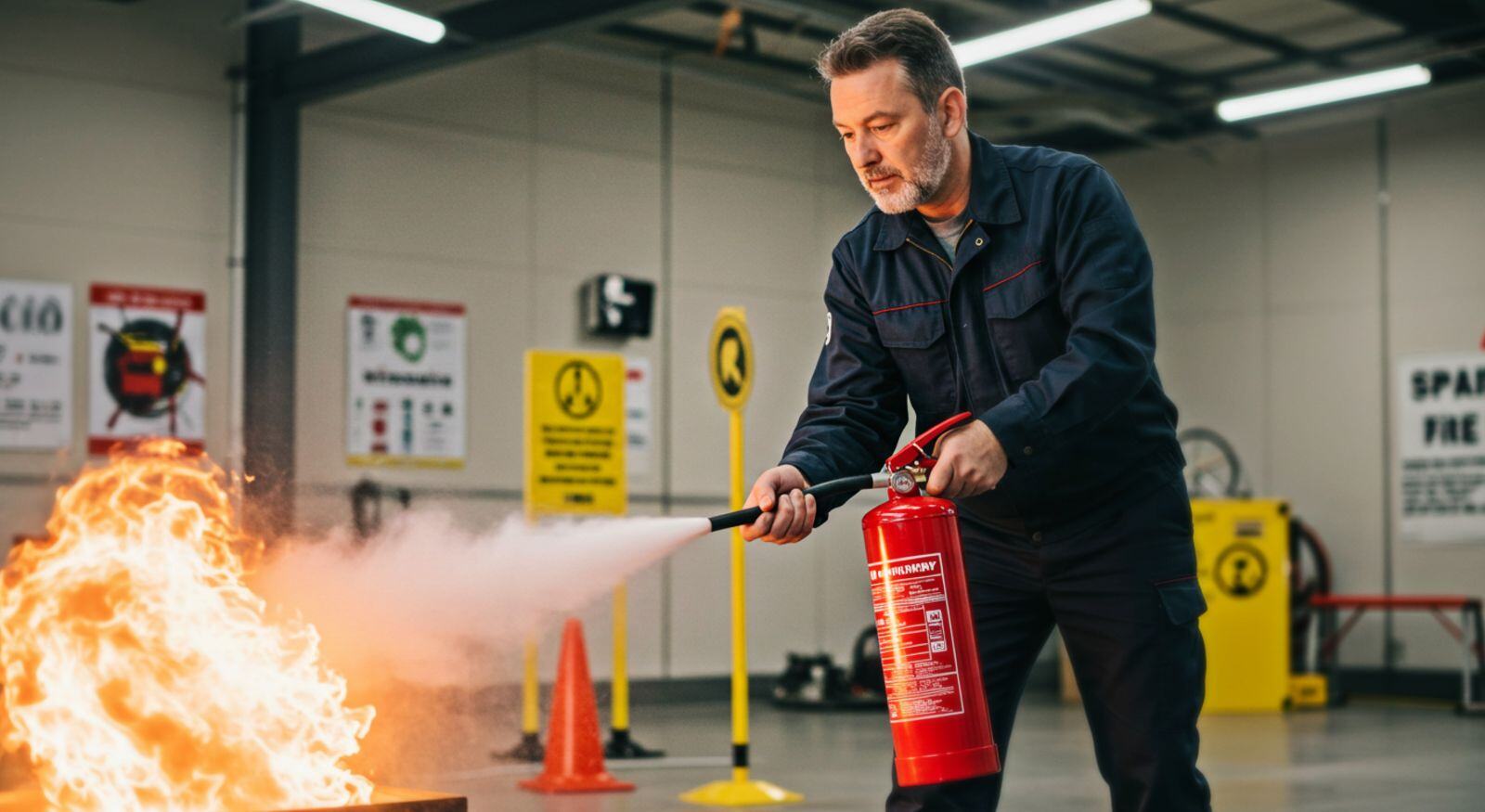
A house fire is undoubtedly a major danger for you and your family. But not knowing how to put it out can worsen the problem. If you feel anxious about how to act during a fire, keep reading.
As a fire restoration company with over a decade of experience, we have seen the destruction left by fire. We are here to help you ease your anxious feelings.
Let's clear up the confusion and give you all the details on fire types. We will explain the categories, the dangers, and how to fight them safely. Let's learn how to be fire-smart!
Why Different Fires Need Different Actions
Why do we even bother to classify fires? It's because of the science behind them. Fire needs three things to exist: fuel, oxygen, and heat. To put it out, you only need to remove one of the elements. And that's where the categories come into place.
 The fuel type can make a world of difference when it comes to extinguishing the flames. Some fuels burn hot and fast (like gasoline), while others smolder and burn slowly (like wood). Using the wrong method to put out the fire can even spread the flames, escalating the situation into a more dangerous one.
The fuel type can make a world of difference when it comes to extinguishing the flames. Some fuels burn hot and fast (like gasoline), while others smolder and burn slowly (like wood). Using the wrong method to put out the fire can even spread the flames, escalating the situation into a more dangerous one.
Fire Categories: A, B, C, D, and K
As we mentioned before, the fuel type can lead to very different results. This is why fires are classified according to the kind of fuel. The National Fire Protection Association (NFPA) is the organization that created and disseminated the fire classification system used in the United States. Let's take a look at them to understand them better:
- Class A (Ordinary Combustibles): These fires use wood, paper, cloth, trash, paper, rubber, and plastic as fuel.
- Class B (Flammable Liquids): This includes fires in combustible liquids, petroleum greases, tars, oils, oil-based paints, solvents, lacquers, alcohols, and flammable gases.
- Class C (Electrical Fires): These fires involve energized electrical equipment, like faulty wiring or a malfunctioning machine.
- Class D (Combustible Metals): These happen in industrial settings or certain chemical labs and involve magnesium, titanium, zirconium, sodium, lithium, and potassium.
- Class K (Cooking Fires): These are the most common household fires and involve vegetable or animal oils and fats interacting with cooking appliances.
Fire Categories: Why Getting It Right Matters
Knowing about the different classes of fire isn't just trivia; it's a key part of fire safety. Here are some benefits that come with knowing what you are doing:
Knowing The Right Tool for the Job
Understanding fire classes helps you choose the correct fire extinguisher, ensuring you put out the fire effectively and safely. For instance, putting out a grease fire with water will worsen the fire. But don't worry; we will explore this in more detail later.
Preventing Danger
Using the wrong extinguisher can fail to extinguish the fire and create new hazards. For example, using water on an electrical fire can lead to electrocution.
Protecting Your Property
Knowing fire classes helps you take appropriate precautions to prevent fires from starting. Properly storing flammable liquids away from heat sources is a class B fire prevention strategy.
Being Prepared
Finally, understanding fire classes empowers you to be more prepared in emergencies. You will know what to do and what not to do, potentially saving lives and property.
Fire Extinguishers: How to Pick the Right One
When dealing with flames, your first line of defense is fire extinguishers. With their help, you can tame small fires before they spread, preventing significant damage and protecting lives. However, not all extinguishers are suitable for all types of fires.
Understanding Extinguisher Types
The easiest way to get which fire extinguisher is suitable for which type of fire is to simply match the extinguisher with the fire class.
- ABC extinguishers: They are multi-purpose and are great for A (ordinary combustibles), B (flammable liquids), and C (electrical) fires.
- BC extinguishers: Good for B and C fires.
- K extinguishers: These are specialized fire extinguishers designed for kitchen fires involving cooking oils and fats. They're commonly found in restaurants but can also be helpful in homes.
Alternative Classification of Fire Extinguishers
Matching the class of fire with the fire extinguisher is the easiest way to tell which one you need. However, there is another way to classify extinguishers depending on what agent they use.

Let's take a look at the five main types:
Water Extinguishers
They are used on Class A fires, cooling the fuel and extinguishing the flames. However, they should never be used on a kitchen fire, especially grease fires, as water can cause the grease to splatter and spread the fire, making it worse.
Foam Extinguishers
Effective on Class B fires involving flammable liquids. Foam smothers the flames and prevents them from reigniting.
Dry Powder Extinguishers
Suitable for Class B fires (flammable liquids) and Class C fires (electrical). They work by interrupting the chemical reaction of the fire.
Carbon Dioxide (CO2) Extinguishers
Suitable for Class B and Class C fires. They displace oxygen, effectively suffocating the flames.
Wet Chemical Extinguishers
Primarily used for Class K (cooking oil) fires. They create a soapy barrier that cools the fire and prevents it from reigniting.
How to Use Fire Extinguishers
The best way to use fire extinguishers is to follow the PASS method:
- Pull (P): Pull the pin.
- Aim (A): Aim at the base of the fire.
- Squeeze (S): Squeeze the lever.
- Sweep (S): Sweep from side to side.
Fire Prevention Checklist
Use this checklist to help keep your home fire-safe:
☐ Smoke Detectors
☐ Installed on every level of the home.
☐ Installed inside each bedroom.
☐ Tested monthly.
☐ Batteries changed at least annually.
☐ Cooking Safety
☐ Never leave cooking food unattended.
☐ Flammable items kept away from the stove/oven.
☐ Oven and stovetop cleaned regularly.
☐ Heating Safety
☐ Heating system inspected and maintained annually.
☐ Space heaters kept away from flammable materials.
☐ Space heaters are not left unattended.
☐ Electrical Safety
☐ Electrical outlets are not overloaded.
☐ Damaged electrical cords replaced.
☐ Electrical system inspected if concerns exist.
☐ Candle Safety
☐ Burning candles never left unattended.
☐ Candles kept away from flammable materials.
☐ Candles placed in stable, heat-resistant holders.
☐ Smoking Safety (If Applicable)
☐ Smoking done outdoors.
☐ Deep, sturdy ashtrays used.
☐ Cigarette butts fully extinguished.
☐ Smoking avoided near flammable materials.
☐ Flammable Materials
☐ Flammable liquids stored in tightly sealed containers.
☐ Flammable liquids stored away from heat sources.
☐ Flammable liquids kept out of reach of children.
☐ Fire Extinguishers
☐ Fire extinguishers are present and easily accessible.
☐ Everyone in the household knows how to use them.
☐ Extinguishers inspected and serviced regularly.
Fire Problems? Call Restore-It!
That was a lot of information, but we hope it has been helpful. Now that you have a clearer understanding of the different types of fires and how to fight them safely, you ought to be more confident in case of an emergency.
However, if your home suffered from a fire and you are looking for a restoration team, call Restore-It immediately! We are experienced in fire damage restoration and are dedicated to helping homeowners protect themselves and their property. With our help, you can rest easily, knowing your home will return to its original condition as if the fire had never happened.
Topics:





